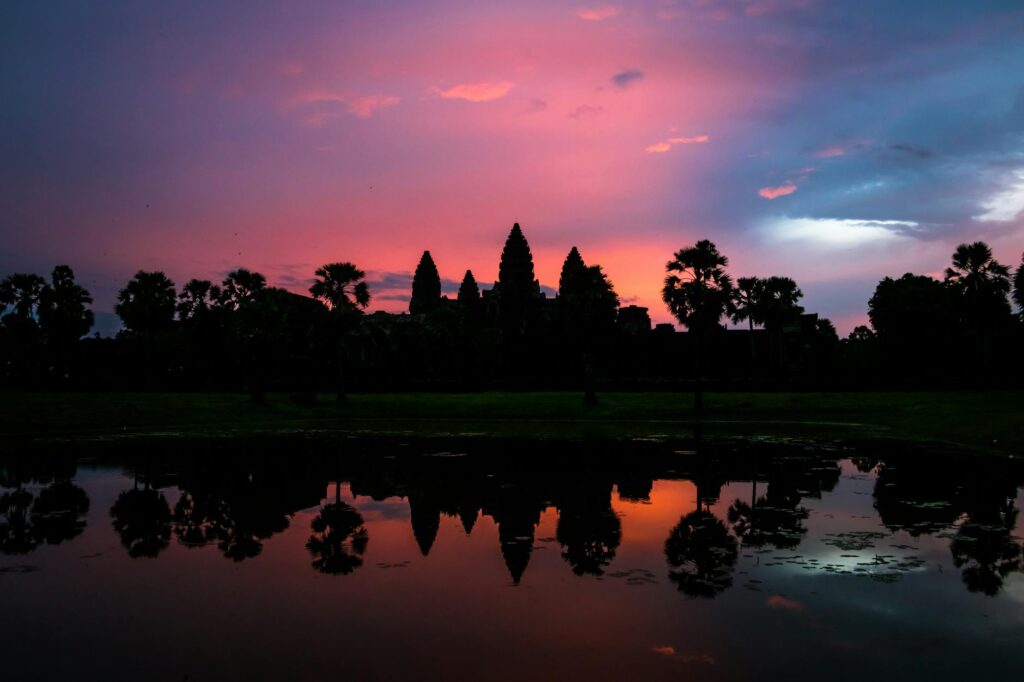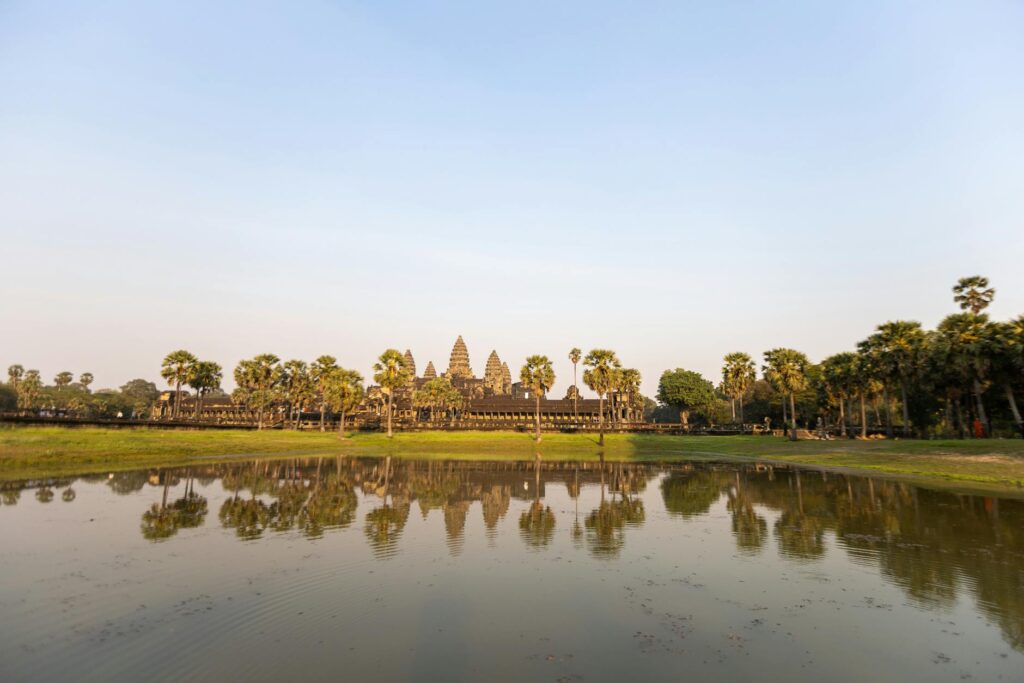Wake up before dawn, feel the cool morning air on your skin, and prepare for an unforgettable experience: witnessing the sunrise over Angkor Wat. This ancient temple, a testament to Khmer artistry and ingenuity, is even more breathtaking bathed in the golden light of the rising sun. This blog post will guide you through planning your Angkor Wat sunrise tour.
Getting There and What to Bring
Reaching Angkor Wat before sunrise requires planning. Consider hiring a tuk-tuk driver for the day; it’s a convenient and cost-effective way to navigate the temple complex. Read more about transportation options here. Make sure to bring comfortable shoes, as you’ll be doing a fair amount of walking. Don’t forget insect repellent, sunscreen, and plenty of water, especially during the hotter months. A small towel can also come in handy for wiping sweat. A wide-brimmed hat is also a great idea for sun protection. You might also want to bring a small camera tripod for those perfect sunrise shots.
The Magic of the Sunrise
As the sky begins to lighten, casting long shadows across the temple’s intricate carvings, you’ll understand why this is such a sought-after experience.  The colors are simply stunning. The rising sun paints the sandstone in hues of orange, pink, and gold, creating a truly magical atmosphere. Find a good spot to set up and prepare for that perfect shot. Check out some tips for photography here.
The colors are simply stunning. The rising sun paints the sandstone in hues of orange, pink, and gold, creating a truly magical atmosphere. Find a good spot to set up and prepare for that perfect shot. Check out some tips for photography here.
Exploring Angkor Wat
After the sunrise, take your time to explore the temple itself. Angkor Wat is incredibly vast, with countless details to discover. Climb to the upper levels for panoramic views.  Don’t forget to explore the outer walls and surrounding areas. Remember to dress respectfully – shoulders and knees should be covered. Consider hiring a local guide to learn more about the history and significance of Angkor Wat; you can often find guides near the entrance. Learn more about Angkor Wat’s history here.
Don’t forget to explore the outer walls and surrounding areas. Remember to dress respectfully – shoulders and knees should be covered. Consider hiring a local guide to learn more about the history and significance of Angkor Wat; you can often find guides near the entrance. Learn more about Angkor Wat’s history here.
Beyond Angkor Wat: Other Temples
While Angkor Wat is the star of the show, the Angkor Archaeological Park is home to many other magnificent temples. After exploring Angkor Wat, consider visiting Angkor Thom, Bayon, or Ta Prohm. [IMAGE_3_HERE] Each temple boasts its own unique charm and architectural style. Discover other must-see temples here. Plan your route effectively to maximize your time. Pre-booking tickets can also help you save time and avoid long queues.
Respecting the Sacred Site
Remember that Angkor Wat is a sacred site and a UNESCO World Heritage site. Be respectful of the local culture and traditions. Avoid loud noises and disruptive behavior. Take only pictures and leave only footprints. Help preserve this incredible place for future generations. Supporting local businesses and tour guides is a great way to ensure the sustainability of Angkor Wat. Learn about responsible tourism practices here.
Conclusion
Witnessing the sunrise over Angkor Wat is an experience that will stay with you forever. The combination of history, architecture, and natural beauty creates an unforgettable memory. So plan your trip well, embrace the magic, and create your own Angkor Wat sunrise story. [IMAGE_4_HERE] Book your accommodation here.
Frequently Asked Questions
What is the best time of year to visit? The dry season (November to April) offers the best weather for a sunrise tour, although it’s also the most crowded time.
How early should I arrive? Aim to arrive at least an hour before sunrise to secure a good viewing spot and soak in the atmosphere.
Can I visit Angkor Wat independently or should I hire a guide? You can visit independently, but a guide can provide valuable insights into the temple’s history and significance.
What’s the cost of entry? Check the official Angkor Archaeological Park website for up-to-date pricing information.
Are there any restrictions on photography? Generally, photography is allowed, but be mindful of any specific rules or restrictions in certain areas.

